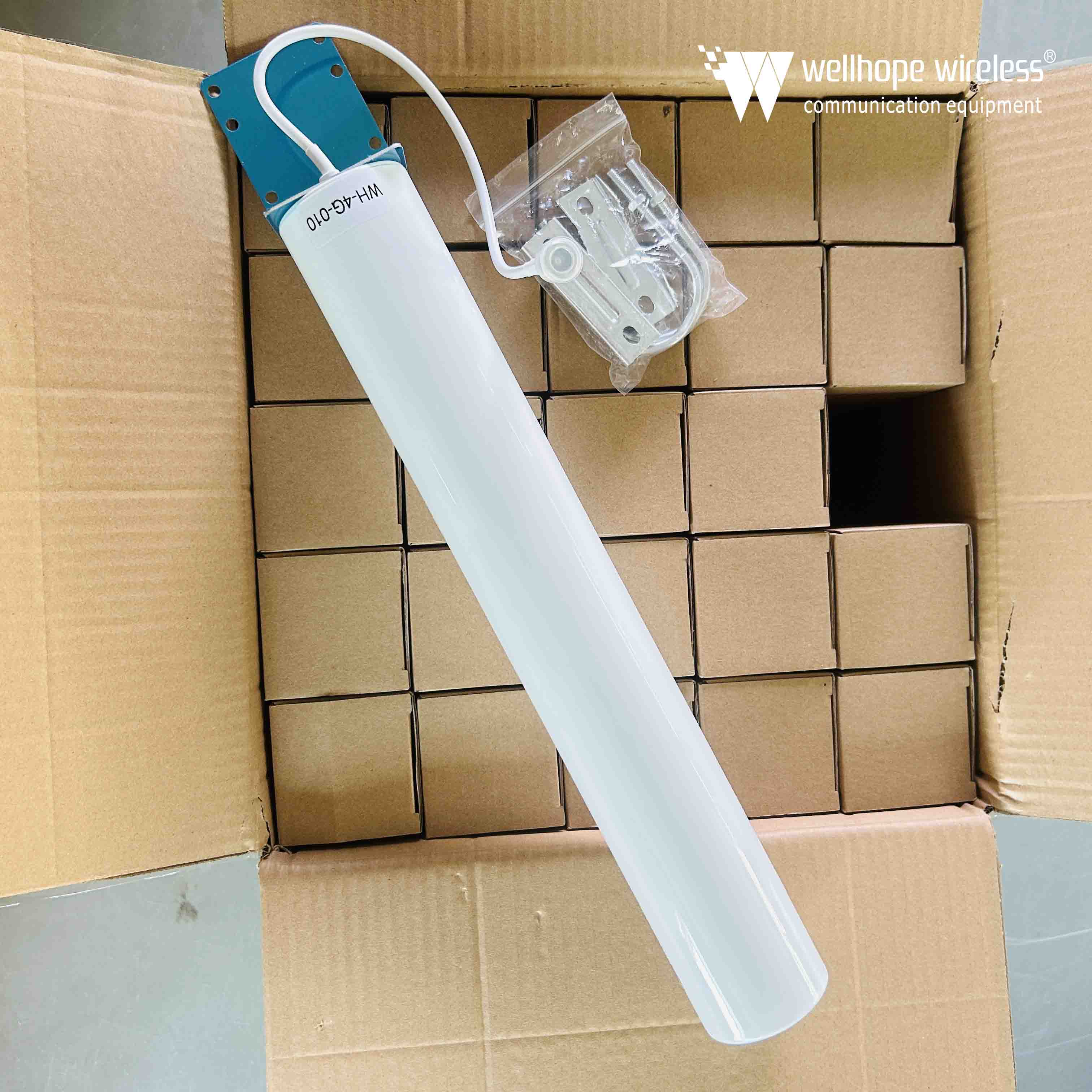Bezüglich dB, dBm und dBi
Geschätzte 15 Minuten bis zum Ende des Lesens
D B (Dezibel)
DB ist eine relative Einheit, die zur Darstellung des Verhältnisses zwischen zwei Größen verwendet wird. Sie wird normalerweise verwendet, um das Verhältnis von Leistung oder Spannung (oder Strom) zu beschreiben.
Definition: (dB=10 \ log_ {10} \ left (\ frac {P_2} {P_1} \ right)) oder (dB=20 \ log_ {10} \ left (\ frac {V_2} {V_1} \ right))
Davon sind (P_1) und (P_2) zwei Leistungswerte und (V_1) und (V_2) zwei Spannungs- bzw. Stromwerte.
Hinweis: dB ist eine relative Einheit, die das Verhältnis zwischen zwei Mengen darstellt, kein absoluter Wert.
1. Die Dezibel-Berechnungsformel für das Leistungsverhältnis:
Beim Vergleich zweier Leistungswerte lautet die Dezibel-Berechnungsformel:
DB=10log10 (P1P2), wobei (P_1) die Referenzleistung (normalerweise ein fester Wert) und (P_2) die zu messende Leistung ist. Wenn (P_1) 1 Watt ist, kann die obige Formel wie folgt vereinfacht werden: dB=10log10 (P2), wobei (P_2) der Leistungswert in Watt ist.
2. Die Dezibel-Berechnungsformel für das Spannungs- (oder Strom-)Verhältnis:
Beim Vergleich zweier Spannungs- (oder Strom-)Werte lautet die Dezibel-Berechnungsformel:
dB = 20log10(V1V2)
vielleicht
dB = 20log10(I1I2)
Among them, (V_1) and (I_1) are reference voltages and currents (usually fixed values), while (V_2) and (I_2) are the voltages and currents to be measured. If (V_1) or (I_1) is 1 volt or 1 ampere, the above formula can be simplified as:
dB=20log10(V2)
perhaps
dB=20log10(I2)
Here (V_2) and (I_2) are voltage and current values in volts or amperes.
Note: In these formulas, (\ log_ {10}) represents the logarithm based on 10. If (P_2/P_1) or (V_2/V_1) (or (I_2/I_1)) is greater than 1, then the decibel value is positive; If it is less than 1, the decibel value is negative. The larger the decibel value, the greater the multiple of (P_2) relative to (P_1) (or (V_2) relative to (V_1), or (I_2) relative to (I_1)).

DBm (decibels milliwatts)
DBm is an absolute unit used to represent power values, with a reference point of 1 milliwatt (0.001 watt).
Definition: (dBm=10 \ log_ {10} \ left (\ frac {P} {1mW} \ right))
Where (P) is the power value to be measured.
For example, if the power of a signal is 1 watt, then its power is (10 \ log_ {10} (1000)=30 dBm).
DBm is commonly used to describe the power of wireless signals or the sensitivity of receivers.
DBm calculation formula
dBm=10log10(1mWP)
Among them,
(P) is the power value to be measured, in milliwatts (mW).
(1mW) is the reference power value, which corresponds to the power of 0dBm.
Related information
1. Unit conversion:
0dBm corresponds to 1 milliwatt (1mW).
For every 3dBm increase, the power doubles; For every reduction of 3dBm, the power is halved.
For example, 30dBm corresponds to 1 watt (1W), because (10 \ log_ {10} (1000)=30) (because 1W=1000mW).
2. Common conversion values:
o 30dBm = 1W
o 40dBm = 10W
o 50dBm = 100W
3. Precautions:
DBm represents the absolute value of power, not the power ratio.
In the calculation, pay attention to the unit of power and ensure that it is consistent with the unit of reference power (1mW).
Example
If the power of a signal is 4 watts (4W), then its power (in dBm) can be calculated as follows:
dBm=10log10(1mW4000mW)=10log10(4000)=10*(3+log10(4))≈36.02dBm
(Here (\ log_ {10} (4) \ approx 0.602) is the base 10 logarithm of 4)
DBi (decibels relative to isotropy)
DBi is a unit used to describe antenna gain, with its reference point being an idealized isotropic antenna (i.e. an antenna that uniformly radiates or receives in all directions).
Definition: (dBi=10 \ log_ {10} \ left (\ frac {G} {G_ {iso}} \ right))
Among them, (G) is the gain of the antenna to be measured, and (G_ {iso}) is the gain of an isotropic antenna (theoretically 1).
Note that since isotropic antennas do not exist in reality, dBi is a relative unit, but it provides a convenient reference point to compare the gains of different antennas.
DBi is commonly used to describe the gain of antennas used in wireless communication.
DBi calculation formula
dBi=10log10(E0E)
Among them:
(E) is the effective radiation power or gain of the actual antenna.
(E0) ist die effektive Strahlungsleistung oder Verstärkung einer idealen isotropen Antenne. Eine ideale Rundstrahlantenne hat eine gleichmäßige Strahlung in alle Richtungen. In der Praxis gibt es keine solche Antenne, daher dient sie als Referenzmaßstab.
Ähnliche Informationen
1. Referenz-Benchmark: Der Referenz-Benchmark für dBi ist eine Rundstrahlantenne, die ein theoretisch ideales Modell darstellt, um die Verstärkung anderer Antennen zu vergleichen.
2. Beziehung zu dBd: dBi und dBd sind beides Einheiten, die den Antennengewinn beschreiben, aber ihre Referenzstandards sind unterschiedlich. Der Referenzmaßstab für dBi ist eine Rundstrahlantenne, während der Referenzmaßstab für dBd eine Dipolantenne ist .
(Dipolantenne). Es wird allgemein angenommen, dass bei gleicher Verstärkung der durch dBi dargestellte Wert 2,15 größer ist als der durch dBd dargestellte Wert (d. h. dBi = dBd + 2,15).
3. Beispiel: Wenn die Verstärkung einer Antenne als 16 dBd in dBd dargestellt wird, dann wird ihre Verstärkung als 18,15 dBi in dBi dargestellt (normalerweise sind es 18 dBi, wenn Dezimalstellen ignoriert werden).
Zusammenfassend lässt sich sagen, dass dBi eine Einheit zur Beschreibung des Antennengewinns ist und seine Berechnungsformel auf dem Verhältnis der effektiven Strahlungsleistung der tatsächlichen Antenne zur effektiven Strahlungsleistung der idealen Rundstrahlantenne basiert . Im Vergleich zu dBd ist dBi die Referenz für Rundstrahlantennen. Wenn also derselbe Gewinn dargestellt wird, ist der dBi-Wert 2,15-mal höher als der dBd-Wert.


















 Nachrichten
Nachrichten











